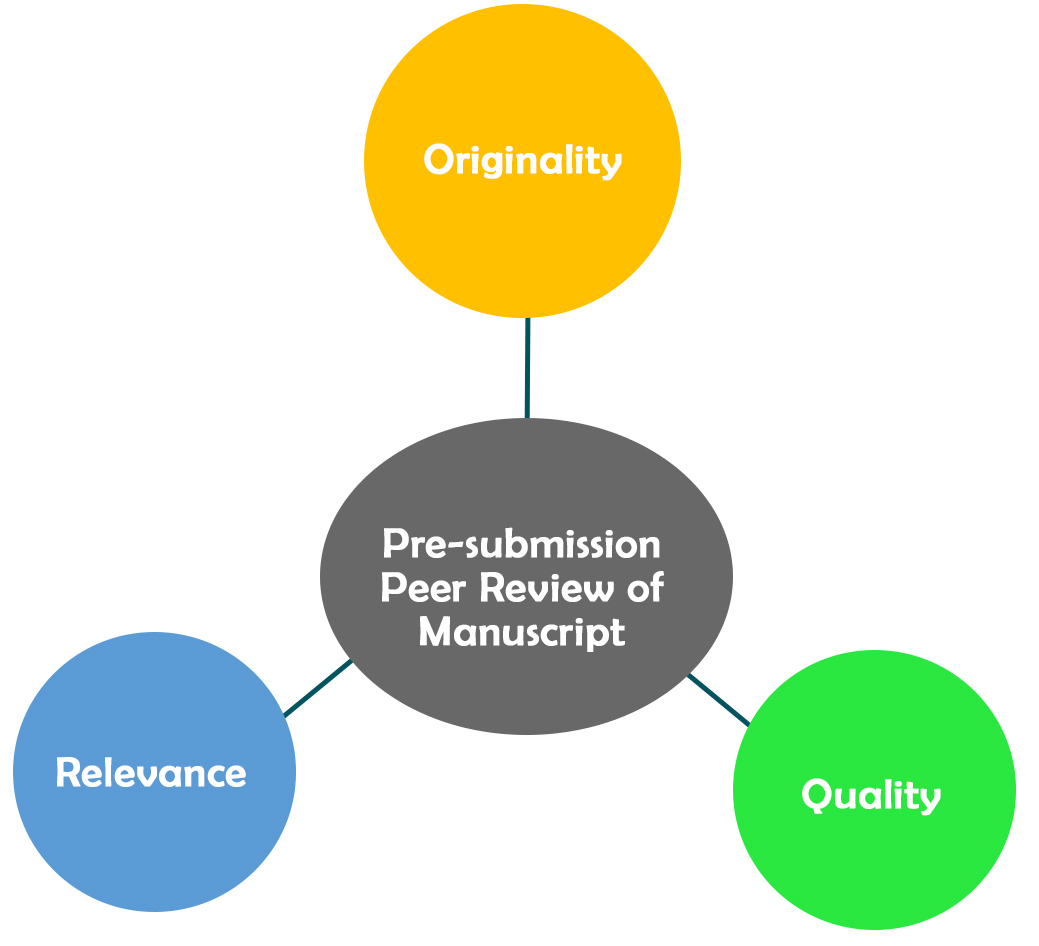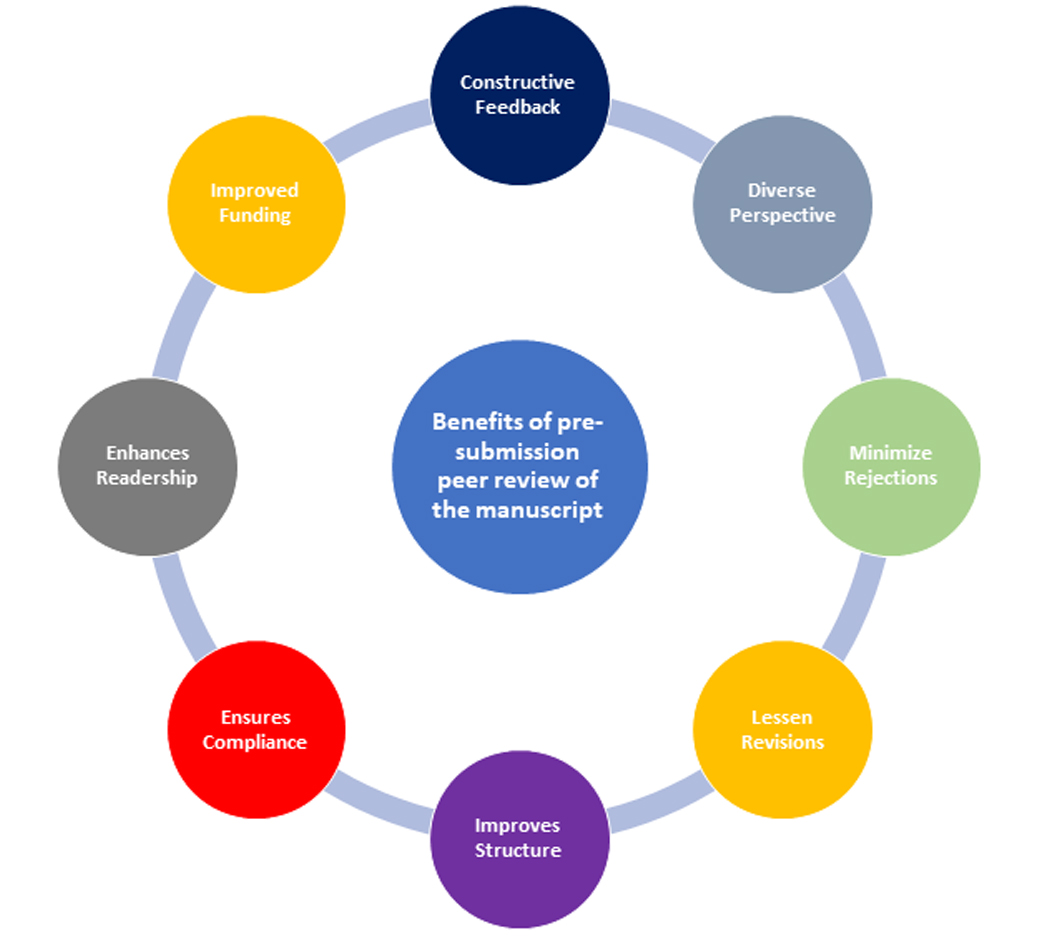Submitting the manuscript for peer review and getting it approved for publication is often strenuous. The process is not only lengthy but can be disheartening as well when your manuscript is rejected after a long wait. Recently, most publishers have been offering pre-submission review services for the manuscript to save authors from this trauma.
What is a Pre-submission Peer Review of the Manuscript?
Pre-submission peer review of the manuscript involves getting your manuscript reviewed by experts in the field before submitting it for publishing. The experts validate the originality, quality, and relevance of the content to the field.
What are the benefits associated with Pre-submission Peer Review of the Manuscript?
Pre-submission peer review of the manuscript can offer the following benefits:
- Constructive Feedback: A pre-submission review from the experts in the domain helps a writer obtain constructive feedback on his work and improve the draft before final publication.
- Diverse Perspective: As pre-submission peer review is undertaken by multiple experts, it helps the writer to obtain diverse perspectives on the manuscript. This also significantly enhances the likelihood that the work will be appreciated by a diverse audience.
- Minimize Rejections: Pre-submission peer review helps to identify any flaws and inaccuracies in the manuscript, hence minimizing the chances of rejections at the final submission.
- Lessen Revisions: It is often troublesome to revise the manuscript repeatedly. Pre-submission review saves the writers’ efforts on multiple revisions, especially when it demands extensive re-writing.
- Improves Structure: Pre-submission peer review not only improves the content but also enhances the overall structure of the paper. The experts extend their suggestions regarding the organization of the paper and how to enhance its presentation to the readers.
- Ensures Compliance: Pre-submission peer review ensures compliance with the publisher’s guidelines. It often happens that the content and structure is appropriate but the writers fail to cautiously adhere to the publisher’s guidelines which leads to rejection of their manuscript.
- Enhances Readership: The reviewers cross-check the originality and flow of the content, aptness of the research design, ethical accuracy, clarity of the language, adequacy of the analysis, and significance of the content to the chosen domain. These factors are important to submitting a flawless manuscript that can appeal to the target audience and secure improved readership.
- Improved Funding: When a writer’s work is widely applauded, there are fair chances that he/she may get funded for the next publication.
Conclusion
The pre-submission peer review of the manuscript creates a win-win situation for all the stakeholders. It not only saves on time and efforts but is also instrumental in building trust among the writers, publishers, and the readers.





